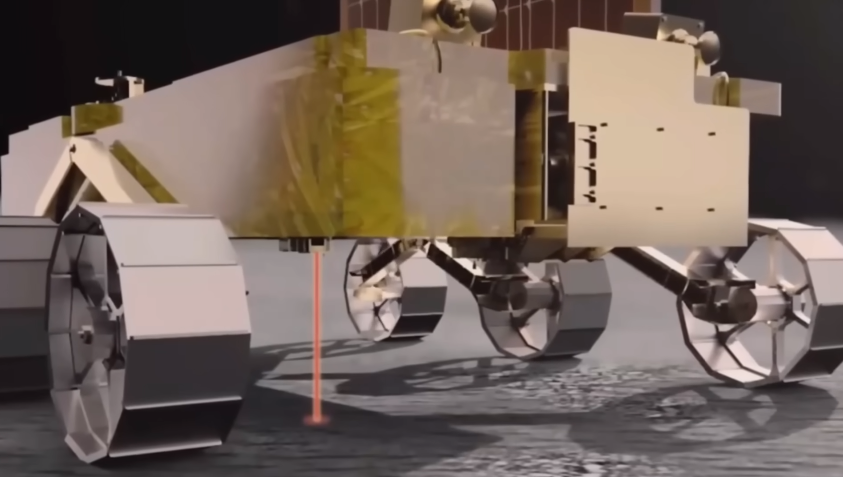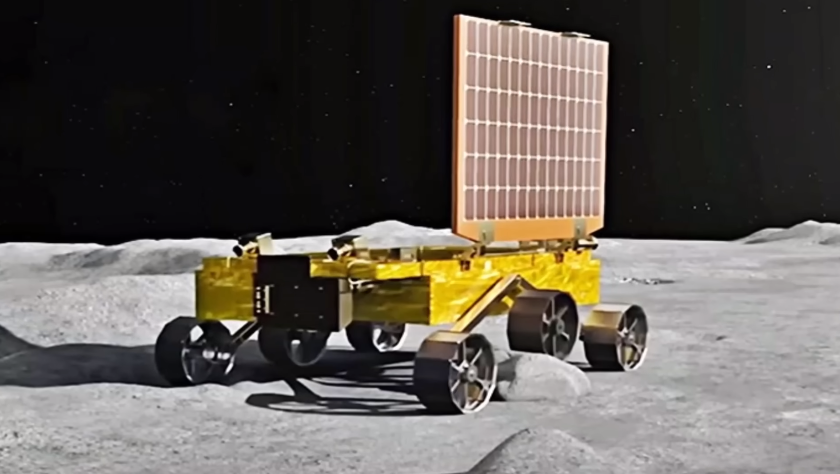Even after landing, India’s Chandrayaan-3 mission was in jeopardy. The rover that came out of Chandrayaan 3 is in danger. A huge operation is being done to save him. To save which ISRO scientists are working together and remember this mission is only for fourteen days.
Why the mission of Chandrayaan 3 lasted for 14 days
Where this Chandrayaan 3 has landed, there will be light for the next fourteen days. Chandrayaan 3’s rover and lander are fitted with solar panels. Which will only run in sunlight because they don’t have a battery for backup which will cause their solar panel to die. And because of the darkness, the temperature of the Moon’s South Pole will drop even further, which will shut down the Chandrayaan 3 lander and rover without any technology to return it to Earth.
At such a low temperature, all its parts will freeze. There are also very few chances of staying in such a cold for 14 days and turning on again after 14 days. So this clearly means that Chandrayaan 3 Rover and Lander will have to find water, silicon and Helium 3 within the same 14 days. If Chandrayaan 3 fails to locate these three, then the mission will be a complete failure. If all these are found, India will become richer than NASA. Even after landing Chandrayaan 3, he has very little time, the mission is now in great danger.
Chandrayan 3 in trouble
There are craters and mountains on the lunar landing site of Chandrayaan 3.

Chandrayaan 3’s lander, which landed the rover, was fitted with AI technology. With this technology, the surface of the moon was scanned and the lander made a soft landing on a flat surface, avoiding these craters.

But the rover that came out of this lander is still moving around on the surface of the moon. And these are not so much advances as it will complete its mission within 14 days while remaining within 500 meters radius of the lander. If it goes beyond this radius, it will lose connection with the lander.
Within this route, the rover’s path will encounter many pits as well as many small and large mountains. The rover is supposed to find water, silicon and Helium 3 from large craters while avoiding smaller craters.
Because the sunlight falls well in the small craters

And the sun doesn’t shine inside the large craters where water can form in ice form. And he has to go inside the pits to find water.
Mission Successful Chances
There are high chances that this rover may fall into any pothole or get damaged by hitting a rock. This will completely fail the mission.
Now the biggest thing is that it can generate only 50 watts of power with the help of solar panels. Very few components of the rover can be turned on in such a low power of 50 watts. He also has to operate his camera and protect himself from obstacles in his way.

Apart from this, it has to scan the surface by shooting a laser on the surface of the moon. Running all of these things on fifty watts might be a little difficult for this rover. But according to ISRO it is designed as such. That it can operate its system using less energy. But still its AI technology is not as advanced as that of Vikram Lander. It cannot take decisions by itself, it cannot handle it. Like the Vikram Lander did when it landed. It will be operated by the ISRO team on the ground itself.
That is, if the ISRO team does not command it, it will not be able to move forward. Therefore, this Rover can be damaged at any time. Because where this rover is on the other side of the moon, the signal keeps dropping.
Also it is very difficult to see things directly through it. Ever since the landing, ISRO‘s massive test has been going on. With which they are operating the rover, ISRO is protecting the rover from falling into craters. If the signal drops after some time, it will fall into a pit, which highly chances that it can be badly damaged. Which will be the loss to ISRO in case of mission failure.
More than 200 ISRO scientists are working together to get more information about flat surfaces and craters. There are many advanced cameras installed inside this Rover.

You will see these cameras facing the front. ISRO is getting information about whatever its cameras are seeing. This information takes some time to reach the ground. That is why the speed of this rover is only 1 cm per second.
It collects information after a short run and then sends that information to ISRO. And it then moves a little bit then collects the information and then sends it to ISRO. Through this information the ISRO team can command the rover back and forth right and left.
If Advance AI technology in Chandrayaan 3 Pragyan Rover
If it had advanced AI technology in it, it could automatically move forward, backward, right, left, etc. and it could save itself from falling into potholes. And his speed would have been higher. It does not have enough advanced technology to protect it from these pitfalls. For this reason, its speed was kept low so that it can run at a low speed and collect information and send it to ISRO, then ISRO can operate the lander with that information.
Even at this low speed, the chances of it falling into a crater are high. Because the signal can drop at any time. If it falls into a pit, it cannot be straightened. It will be reversed forever and India’s mission will end there.
Moon Surface
Now it should also be known that the soil on the surface of the moon is charged, that is, it sticks. Because there is a very weak ionosphere, the particles in it become charged, which makes the soil sticky. If Chandrayaan 3’s Pragyan Rover’s tire hits a rock or gets stuck in a crater and falls to one side, lunar soil will stick to its solar panels. This will stop the rover from getting energy and the mission will fail.
All these difficulties were first assessed and considering these difficulties, ISRO kept its pace low. And ISRO itself is operating it. If everything goes well, it will be operated for fourteen days. After that his mission will be complete. Because after fourteen days it will be dark on this side of the moon.
Well now a question arises here that after 14 days the light will come again. So this rover will charge again and start running again. So it can, and it also has a function that will start recharging its solar panels when sunlight hits it again.
But the biggest problem is that when it gets dark, the temperature there will drop a lot i.e. the temperature there will be -12. Because of the devices that are installed inside it. Whether or not they will do so after fourteen days at such a low temperature.
But ISRO had already tested the Pragyan Rover on the ground. He was taken in a helicopter and taken to a place where the temperature was already -18, which is -5 degrees below the surface of the moon. So at that time all his devices were working properly. But it was taken there for a while and here it is for a full fourteen days.
So these devices may or may not work. Therefore, ISRO itself says that this mission has to be carried out for fourteen days only. If it survives that cold and turns on, it will continue to send data back to Earth for the next fourteen days. But nothing can be said yet whether it will be on for fourteen days or not.

